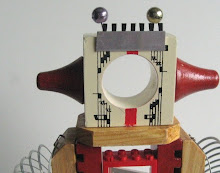Glass: Food and drink bottles
Paper: Newspaper, office paper, phone books, magazines and glossy prints, cardboard
Metal: Steel and tin cans, aluminum pop cans, aerosol cans, aluminum foil

Condense and Crush – collapse and tie up stacks of cardboard boxes and newspapers. Crush cans by removing the tops and bottoms of tin cans and stepping then crush the cans.
Rinse and Rid – rinse all glass and metal cans and bottles. Dispose of all plastic bottle lids. There is no need to remove labels from the outsides of cans or bottles.
Sorting Stations:
Depending on the size of your household, you can use a cloth bag in your kitchen to collect all the recycling and then have a second location in your garage for sorting to save space in your house.
If you want something that blends in with your furnishings more, use a piece of furniture like a buffet table or even an old wooden box will do. Just create compartments within to separate your recyclables.
You can also buy recycling units. There are many different kinds to choose from, so choose the one that will work for your family.
To make it fun for kids, label your containers by using chalkboard paint and chalk to label each unit accordingly. Create four stations:
Aluminums & tins
Glass
Plastics
Papers
Ship it off:
Check with your community about available curbside pick-up. If that is not available in your community, you will need to take your recyclables to a specific drop-off station.
For large household items or lawn items, you may have to make an appointment for pick up.









